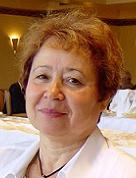
Dr. Irina Savvatimova is one of the giants of Russian LENR research able to attend the 30-year celebration organized by the Coordination Council on the Cold Nuclear Transmutation Problem of the Russian Academy of Natural Sciences (RANS).
See Russian Academy Marks Pioneering Discovery
Dr. Savvatimova is a pioneer of the glow discharge method to generate LENR and her group was one of the first to report transmutation elements from this type of experiment. She is also a research scientist at the Scientific Industrial Association LUCH working to generate isotopes for nuclear medicine.
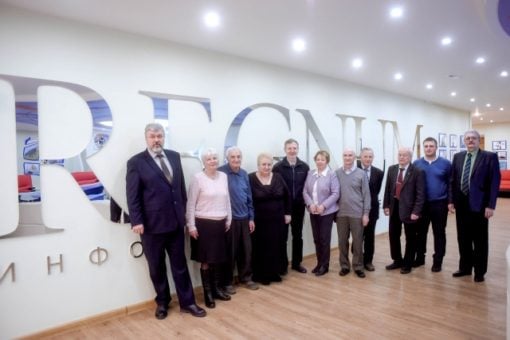
Participants in the conference of the Russian Academy of Natural Sciences “Cold fusion – 30 years: results and prospects” on March 23, 2019 in Moscow. From left to right: A.S. Sverchkov, L.V. Ivanitskaya, A.V. Nikolaev, A.A. Kornilov, A.I. Klimov, I.B. Savvatimova, A.G. Parkhomov, A.A. Prosvirnov, V.I. Grachev, S.N. Gaydamak, S.A. Flower.
She had already been working with glow discharge experiments and had defended a thesis on changing the structure and physico-mechanical properties of materials irradiated with hydrogen and helium ions when she heard about the announcement of Drs. Martin Fleischmann and Stanley Pons.
She quickly switched gears and began researching cold fusion, along with two new collaborative partners.
In this exclusive interview, Ruby asks Dr. Irina Savvatimova about her first experiments and the early history of CMNS research she experienced.
IS At this time, I was investigating the behavior of materials under irradiation with hydrogen and helium ions with an energy of less than 1 Kev as applied to the first wall of a fusion reactor.
The anomalous effects of changing of the density of various types of defects by optical, electron transmission and auto-ion microscopy were detected. The formation of irregular clusters of vacancies and interstitial atoms, an increase in the dislocation density by orders of magnitude, the formation of pores in the volume and blisters on the surface were founded. An increase in the diffusion rate by a factor 4–5 diffusion coefficients was discovered.
Studies of changes in the creep rate of metals and alloys under irradiation with hydrogen and helium ions were also of interest, since these changes in ion irradiation conditions correlated with available creep data under the conditions of reactor irradiation of these materials.
I talk about this in such detail, because I immediately thought that an interesting result, what Martin Fleischmann and Stanley Pons performed as Cold Fusion, could be obtained in a gas discharge – but not in electrolysis. I was ready to conduct experiments, because there was the real gas discharge installation in working condition, the palladium and other materials, as well as the hydrogen and deuterium gases. The parameters of the gas discharge to give the maximum anomalous effects of changes in the structure and properties were also determined.
Then I got a telephone call from Jan Kucherov on March 24, at the same time of discussion with my colleague V. Romodanov, about the possibility of working on Cold Fusion at our institute. He believed that no one would be interested.
Jan Kucherov asked permission to see the installation of the gas discharge, which I used at the time.
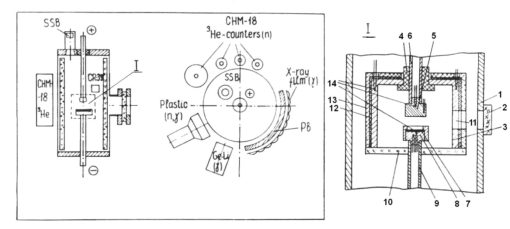
I asked him: “Will we do Cold Fusion?”. After a pause, he replied: “Yes.”
The next day, Jan Kucherov and Alexander Karabut came to see the installation.
By this time, all three of us had already defended dissertations and had some experimental experience.
Yan Kucherov and Alexander Karabut worked with high-power plasma installations, but their wish to conduct experiments on that equipment was not supported by the head of the laboratory, who feared an accident. So I was lucky to start working with such team of like-minded people.
We agreed that we would begin work with the existing gas discharge installation which I had already worked with. Devices for measuring radiation were found in other laboratories of the institute. A week later, we had measurement systems with gas-discharge – helium-3 sensors for neutrons detecting, radiometers with ZnS scintillators calibrated using a Pu-Be neutron source, and recording devices and oscilloscopes that made it possible to distinguish neutron signals from other pulses.
The first series of experiments on palladium was successful. We registered neutrons. It was very exciting. We could not sleep at night. Experiments on other materials (Mo, stainless steel ..) gave the smaller quantitative effect. It was understandable, because a smaller amount of deuterium could be absorbed under the same conditions. The qualitative picture was repeated when we changed the material of sample – the object of irradiation by deuterium.
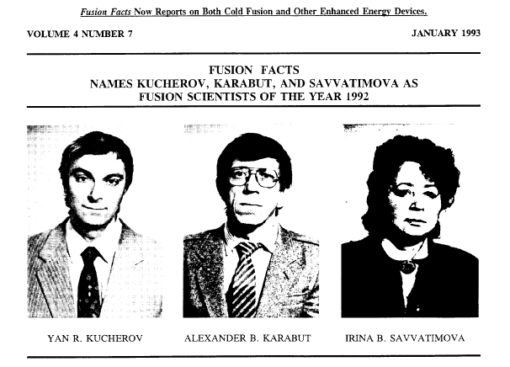
The head of my laboratory, Babad-Zakhryapin, reported on the first positive results of the experiments at the scientific council of the Institute a couple of weeks after the start of the experiments. A couple of months later, we tried to publish an article in the journal Successes of Physical Sciences of the Russian Academy of Sciences.
Further experiments have deepened research on the measurement of radiation by all methods available to us.
Later we learned that many groups in Russia began trying to conduct experiments on Cold Fusion, using their own techniques and/or improving electrolysis, for example, and subsequently applying plasma electrolysis.
For example, a group led by Academician B.B. Deryagin recorded neutrons during the splitting of heavy water ice back in 1986. Andrey Lipson worked with B.B. Deryagin, and later, he continued this research in CF field.
Another very vivid example is Academician A.N. Baraboshkin. Official science took a very wary direction of Cold Fusion, but A.N. Baraboshkin ventured to fund a Cold Fusion project from the funds of the Electrochemistry Division of the Russian Academy of Sciences and tried to unite several groups of researchers from different institutions, among them was our group. Funding was very modest, but the fact that the Academy of Sciences supported our research helped us.
Baraboshkin organized a section on cold fusion at the all-Union seminar “Chemistry and Hydrogen Technology” (Hydrogen-91, Zarechny) in 1991, which was attended by representatives of the Ural Polytechnic Institute, Institute of High-Temperature Electrochemistry of the Russian Academy of Sciences (RAS), Ekaterinburg, Institute of Physics- Tsarev V.A. Lugansk Machine-Building Institute – PI Golubnichy and B.I. Guzhovsky from VNIIEF Sarov, and A. Lipson of the Institute of Physics and Chemistry of the Russian Academy of Sciences.
V.F. Zelensky, Director of Kharkov Physico-Technical Ukrain, Ukrain, also actively supported this area and he himself participated in experiments.
Yuri Bazhytov founded the firm “Erzion”. He experimented with plasma electrolysis in confirmation of his Erzion theory. Yuri Bazhutov was the main organizer of the 24 Russian conferences and this is his great merit.
Since 1990, seminars have begun to be held in academic and industry institutes. And since 1991, a seminar has already operated at the Peoples’ Friendship University under the guidance of N.V. Samsonenko (now passed the 90th seminar). Activity in this area has increased.
The All-Union seminar “Hydrogen-91”, where there were more than half of the works devoted to studies on cold fusion, most of the participants had worked in this direction a long time.
The first All-Russian Conference was held in 1993. The proceedings of this conference were held under the name Cold Nuclear Fusion, and later the conference was called Cold Fusion and Nuclear Transmutation. Before the first Russian conference, a conference was held in Belarus, where we had an opportunity to report the results of work.
I want to tell about many groups which conducted own successful investigation in this area. I am not sure that it is possible at this time.
Now a lot of research groups work in LENR direction.
RUBY What have been some of the transmutation products you’ve discovered?
IS I had experience with a glow discharge for more than 10 years before the CF, work has already been done on studying changes in structure and properties, so for me the study of transmutation was just a more in-depth comprehensive study of the process. The study of the elemental and isotopic composition showed the appearance of elements – that were absent before the experiments – in the sample material and the structural parts of the discharge chamber.
Changes in the elemental and isotopic composition were also tested in different laboratories and institutes by all possible methods. Analysis of the elemental composition on an electron microscope (EDS) revealed the preferential location along the boundaries and sub-boundaries of the grains, where additional impurity elements that were not present in the sample – and elements in the discharge chamber that weren’t there before the experiment. This effect was discovered by our colleague Alexei Senchukov when analyzing samples using a Hitachi electron microscope. He significantly increased the duration of the recording of the spectra, which had not been done before by anyone. Tuning the device to identify specific elements, it was found that various impurity elements can be localized in different places (Transaction of Fusion Technology –ICCF-4,1993// ANS, December 1994// Savvatimova et al, Cathode change after Glow Discharge, 389-394).
The such elements as Sc, V, Cd, In, P, Cl, Br, Ge, As, Kr, Sr, Y, Ru are never present in the discharge chamber, but these elements were found in the Pd foils after experiments with different ions (H, D, Ar) almost always.
Changes in the isotopic composition of samples irradiated with hydrogen and deuterium were studied by mass spectrometry, Secondary Ions Mass-spectrometry, Spark Mass-spectrometry, Thermoionisation Mass-spectrometry. Several elements were observed using SMS with an isotope ratio deviating from the natural isotope abundance by a factor of two or three, such as 6Li/7Li;10B/11B; 12C/13C; 60Ni/61Ni/62Ni; 40Ca/44Ca; and 90Zr/91Zr. Deviation from the natural ratio of Ag isotopes 109/107 as 3/1 to 9/1, natural composition is 1/1) in palladium cathode. The significant change of the Pd isotopic composition was observed using SIMS also.
So, the elemental and isotopic structure of the cathode materials before and after Glow Discharge (GD) experiments were analyzed by EDS, SNMS and SMS. The isotope shift tendency in Pd and Pd alloys and Ag was observed. The comparison of the quantity of impurity elements change and generation was made.
The four same groups of certain impurities were repeatedly formed after Deuteron irradiation in similar conditions: light – with masses of 6, 7 10, 11 19, 20, 22; of middle masses near 0,5 matrix element; (± 10) of matrix element – Cd, Sn, Ag and of heavy masses (120 -140) Sn, Te, Ba).
The quantity of additional impurities, which was found after ion irradiation in Pd and Pd alloys, can to show in the following row with decreasing: Pd, alloys PdPTW, PdNi, PdRu, PdCu.
The qualitative correlation of the maximum increase of impurities in the cathodes with the minimum heat output during GD experiment was noticed for temperature interval less 200oC (ICCF-7).
Later, similar studies on changes in the elemental and isotopic composition were carried out on titanium (ICCF-10).
However, all the effects of transmutation with an increase in the content of individual elements up to 100 times or more, with a change in the isotopic composition, could not convince critics that such changes were a reality.
Only an experiment with radioactive material could convince these people, so it was another happy occasion when John Dash invited me to Portland State University to conduct research with uranium.
As a result of this work, we were able to show the presence of alpha, beta and gammas. The alpha activity of Uranium increased after irradiation with hydrogen and deuterium ions about 2-4 times, and beta and gamma emission increased from 10 to 60%.
Emission registration on films during glow discharge experiments ICCF-9 [.pdf]
Along with the fascinating increase of alpha activity, an increase in the amount of thorium (EDS) and a decrease in uranium is observed by chemical analysis (MIT) and by observing the intensity of peaks in the spectra of characteristic radiation of uranium (x-ray data) decrease.
The first publications of these results were reported to ICCF-3 (1992), ICCF-4(1993) and Russian Conferences and Seminars, Russian “Letters in Journal of Technical physics” 1990
Possible Nuclear Reactions Mechanisms at Glow Discharge in Deuterium ICCF-3 [.pdf]
Cathode Material Change after Deuterium Glow Discharge Experiments ICCF-4 [.pdf]
The presence of low-energy nuclear reactions was confirmed by the GD low-energy influence. Some observations were:
– Significant increase in additional elements ranging 10 -1000 times was found.
– Isotopic deviation in materials (Pd, Ti, W, and U) and the increase in the additional impurity elements from 2 up to 100 times was discovered.
– The majority of the newly formed elements, found after the GD switch off were found in certain local zones (“hot” spots, micro melting points) on the cathode material surface.
– Post-experimental isotopes with masses of 169, 170, 171, 178, and 181 (less than W and Ta isotopes) were found with the help of TIMS.
– The isotopic changes continue to occur for at least 3–5 months after the GD exposure. Separate isotopes with masses less than W and Ta isotopes have grown by factors ranging 5–1000 times.
– The change in alpha, beta, gamma radioactivity caused by the GD was observed in Uranium.
.The correlation between X-ray emission data and the thermal ionization mass-spectrometry. Data for the same isotopes is shown in the W foils. The comparison of the mass spectra and the gamma spectra shown to the existence of Yb and Hf, isotopes in W after experiments in Deuterium.

The collection of effects confirms availability of nuclear transmutations under exposure to GD (Glow Discharge) low-energy ions bombardment in materials and in other processes.
The GD low-energy influence can be used in new power engineering and new technologies (e.g., isotope production). The described effects should be paid more attention to.
I studied structural changes and the physico-mechanical properties of materials under irradiation with hydrogen, deuterium and helium ions in a plasma discharge with hydrogen ion energies of less than 1 keV deuterium as applied to the first wall of a thermonuclear reactor. These studies were carried out at a gas discharge installation.
I studied these changes because presumably 95% of the ions bombarding the first wall of a thermonuclear reactor should have had H and D ions with energies of less than 1 keV.
Anomalous effects have been observed. Including, there was a blackening of the X-ray film located outside the discharge chamber. However, everyone said that this was not possible with ion energies of less than 1 KeV.

RUBY Could you describe the design of the experiments you performed, what metals you’ve used for cathodes, and how you’ve measured?
The greatest number of experiments was carried out on palladium. After the first experiments the studies were conducted on an EDS electron microscope.
The presence of low-energy nuclear reactions in Glow discharge was confirmed by formation in W (tungsten) of isotopes with mass less than matrix mass (ytterbium and hafnium with 169 -178 masses)
– Significant increase in additional elements ranging 10 -1000 times was found (– Isotopic deviation in materials (Pd, Ti, W, and U) and the increase in the additional impurity elements from 2 up to 100 times was discovered.
– The majority of the newly formed elements, found after the GD switch off were found in certain local zones (“hot” spots, micro melting points, microexplosions) on the cathode material surface.

– Post-experimental isotopes with masses of 169, 170, 171, 178, and 181 (less than W and Ta isotopes) were found with the help of TIMS.
– The isotopic changes continue to occur for at least 3–5 months after the GD exposure.
Separate isotopes with masses less than W and Ta isotopes have grown by factors ranging 5–1000 times.
– The same energy peaks in gamma-spectra occur during and after the GD current switch-off.
– The Significant change in alpha, beta, gamma radioactivity in uranium after GD in Deuterium and Hydrogen was observed. The increase of alpha, beta, gamma-emission are kept without change during of the duration of measurement – 1 year (after 2, 4, 5, 12 months)
– Post experiments weak gamma, X-ray and beta- emissions were detected.
(2) The correlation between the gamma and X-ray emission data and the thermal ionization mass-spectrometry data for the same isotopes is shown in the W foils.
The comparison of the mass spectra and the gamma spectra points to the existence of the following isotopes Ytterbium and Hafnium: 169, 170, 171m, 172, 178
(3) The collection of effects confirms availability of nuclear transformations under exposure to GD low-energy ions bombardment in materials and in other processes.
(4) The GD low-energy influence can be used in new power engineering and new technologies (e.g., isotope production). The described effects should be paid more attention to.
RUBY It’s been speculated that some of the transmutation elements found are from a fusion – and then fission – reaction. Is that probable in your mind?
IS Yes, of course. Some variants of possible reactions are in our articles.
1D2 + 74W186 ® 72Hf178 + 3Li10*
(1+)(+13 MeV) + (0+)(-45.7 MeV)® (0+)(-52.4 MeV) + (2+)(+20.9 MeV) +1.2 MeV [∆1+]
3Li10* ® n + 3Li9*
(1-, 2-) (1.2MeV) (+33.05 MeV) ® (1/2+)(+7.3 MeV) + (3/2-)(+24.95 MeV) +2 MeV [∆ 1-]
3Li9*® 178ms: b— ®4Be9+ 13.61MeV
(3/2-)(+24.95) ®(3/2-)(+11.34)+ 13.61MeV ;
RUBY You have found transmutations of elements in localized spots, and also at grain boundaries. What does this experimental evidence tell you in regards to a theory of this reaction?
IS Yes, it is true. The majority of the newly formed elements, found after the GD switch off were found in certain local zones (“hot” spots, micro melting points, micro-explosions) on the cathode material surface.
It is clear that low-energy plasma initiates the processes of nuclear transmutations.
There are many theories and hypotheses, with the help of some of which, one can explain a part of the observed anomalies. But in the real material there are a lot of processes being performed, and it is very difficult to take into account all of them. Therefore, a single theory or hypothesis cannot explain the whole set of processes.
So in places where defects and inhomogeneities accumulate, there can be a change in the density of the of bombarding ions and a change in the electric field strength to high voltages leading to a microexplosion. In the resulting pores in the process of ion bombardment, the pressure can increase to hundreds of atmospheres. Grain boundaries can trigger an acceleration effect. This is if you approach the explanation from the standpoint of interactions at the macro level.
RUBY Why is this research so important for the world?
IS These studies in the field of “subliminal (as my colleague Rodionov Boris says) energies” could help to understand many natural phenomena and solve the problems of contamination of the planet with radioactive waste, as well as help in the intensification of many technological processes. It is also possible to use this knowledge to expressly predict the behavior of materials under irradiation conditions.
Apparently, the society is not yet ready to use LENR processes for solving energy problems. The society, or those who rule it, does not need a success in solving the energy problem on the planet.
For a while I did not have the opportunity to work in the direction of Cold Fusion. I was engaged in a project to develop targets for the generation of isotopes for nuclear medicine.
If the situation allows, then I would like to apply the Cold Fusion tricks to solve real-world projects that could be useful now.
RUBY Could you say a bit what it was like to work with Drs. Karabut and Kucharov? Describe their contribution to condensed matter nuclear science.
IS I thank fate that it developed so that we began to work together and everyone was able to do something that was not able or did not know another. Result – the general inventions and patents, good publications. Jean-Pierre Vejie after our reports at a conference in Donetsk visited our laboratory. He was present at an experiment. After the visit to laboratory He suggested to publish our article in Physics Letters. At that time He was some of their editors of this magazine. We well supplemented each other at the initial stage of work.
If collaboration was continued slightly longer, perhaps progress would be more considerable.
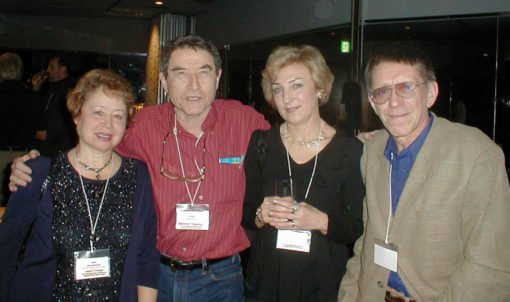
Yan Kucherov knew better than others nuclear physics and was an arbitrator in these questions. Its first hypotheses of simultaneous course of processes of synthesis and disintegration are reflected in the publication at a conference in Nagoya. A.Karabut modernized the glow discharge installation for estimation of thermal effect. They competently gathered a measuring chain for registration of neutrons and gamma. Later Karabut could decipher possible decay chains in gamma spectra. This results was confirmed also by mass spectrometry.
RUBY Dr. Savvatimova, can you tell us what you are working on now?
IS For a while I did not have the opportunity to work in the direction of Cold Fusion. I was engaged in a project to develop targets for the generation of isotopes for nuclear medicine.
If the situation allows, then I would like to apply the Cold Fusion tricks to solve real-world projects that could be useful now.
RUBY Why is this research so important for the world?
-The collection of effects (alpha, beta, gamma-emission on the uranium) confirms availability of nuclear transformations under exposure to GD low-energy ions bombardment in materials.
– The low energy nuclear reactions (subthreshold nuclear reaction) are exist. These process can be used in the different fields of science and technology. Glow discharge low-energy impact can be used in new power engineering and new technologies (e.g., isotopes production, creating special alloys with improved properties, which cannot be create by other method).
The described effects should be paid more attention to. Unfortunately, the society doesn’t think it needs these achievements now (or part of society).
Understandably, for improvement success and great achievements, the good group of researchers and modern equipment and financial support are necessary.
The great Russian poet written ” It is pity to live in this beautiful time there will be neither you nor me”.
Early papers:
1. Karabut A. B., Kucherov Ya. R., Savvatimova I.B. Physics Letters A, 170, 265-272 (1992).
2. Karabut A.B., Kucherov Ya.R., Savvatimova I.B. Proc. ICCF-3, 1992, Nagoya, p.165. Possible Nuclear Reactions Mechanisms at Glow Discharge in Deuterium [.pdf]
3. Karabut A. B., Kucherov Ya. R., Savvatimova I.B. Fus.Tech., Dec. 1991, v. 20(4.), part 2, p.294.
4. Savvatimova I., Kucherov Ya. and Karabut A., Trans. of Fus. Tech.: v.26, 4T (1994), pp. 389-394
5. Savvatimova I.B, Karabut A. B. Proc., ICCF5, Monte-Carlo, 1995, p.209-212; p.213-222 Radioactivity of the Cathode Samples after Glow Discharge [.pdf]
6. Karabut A.B, Kucherov Ya. R., Savvatimova I.B ICCF5, Monte-Carlo, 1995, p.223-226; p.241 Nuclear Reaction Products Registration on the Cathode after Glow Discharge [.pdf]
7. Savvatimova I.B, Karabut A. B. Poverhnost (Surface), V. 1, Moscow: RAN, 1996, p.63-75;.76-81
8. Savvatimova I.B Proc.of 3 Rus.Conf. Cold Fus. & Nuc.Transm., Sochy-95, Moscow, 1996, p.20-49
9. Savvatimova I.B, Karabut A. B. Mat. 2 Russia Conf. On Cold Nucl. Fus. and Nuclear Transmutation. -Sochy, Sep. 19-23 1994, Moscow, 1995, page 184.
For more on the work of Dr. Irina Savvatimova, go to this list of papers, or, search the LENR Library Archive at lenr.org.
The 22nd International Conference on Condensed Matter Nuclear Science ICCF22 convenes September 8-13, 2019 in Assisi, Italy. To Regsiter, go to the International Society of Condensed Matter Nuclear Science website at iscmns.org.

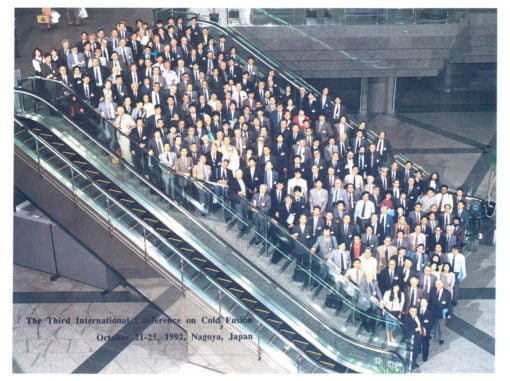


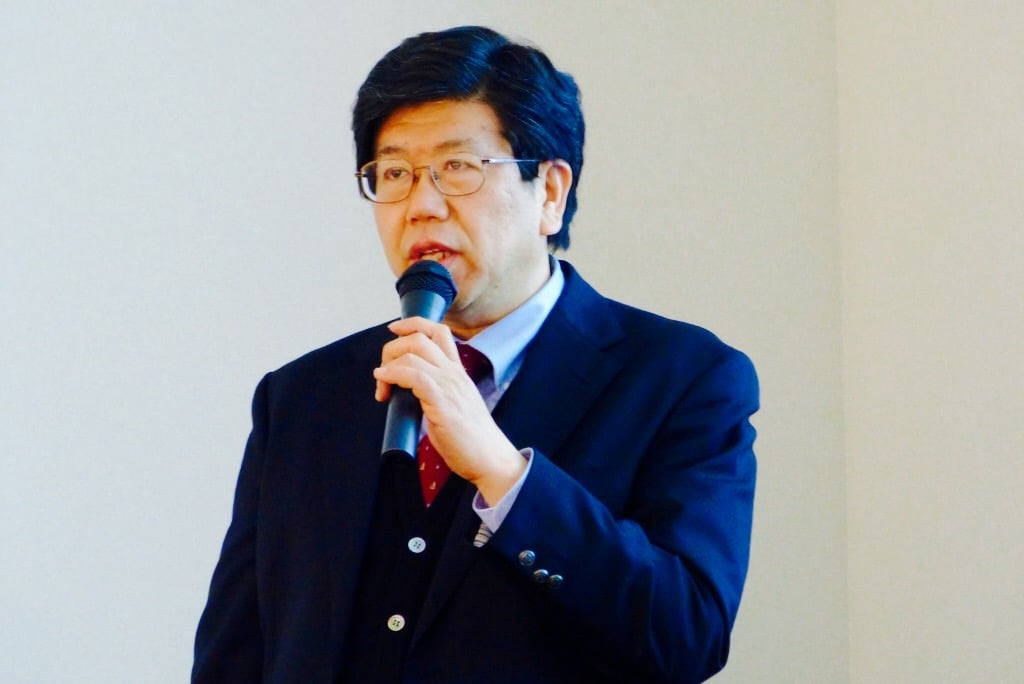

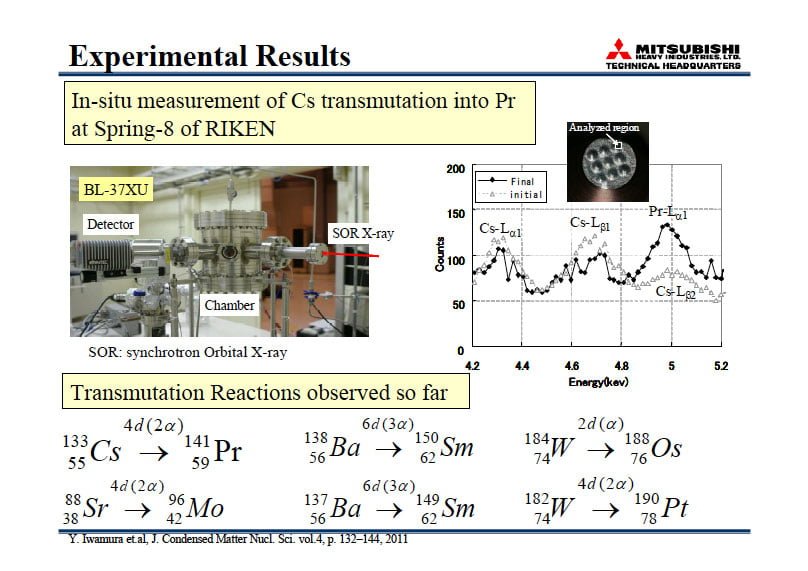
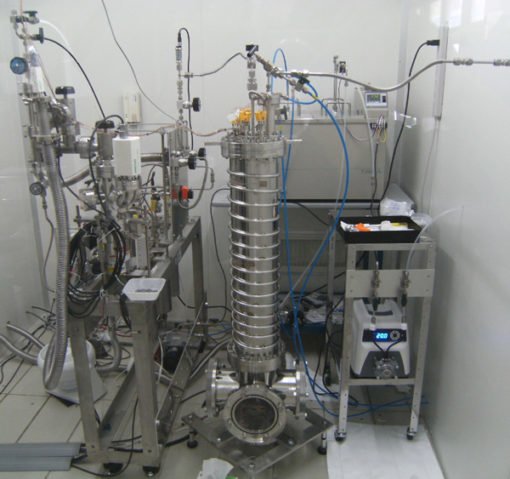
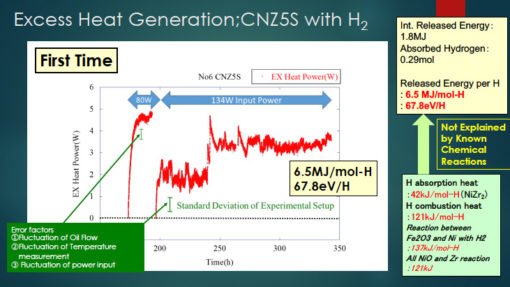


 Dr. Vladimir I. Vysotskii is a Nuclear Physicist and Head of Theoretical Radiophysics Department at Kiev National Shevchenko University, Ukraine. He received a Ph.D. in Theoretical Physics from Kiev Institute of Theoretical physics, and a second Doctorate in Theoretical and Solid State Physics. His areas of research and applications is wide, from lasers to bio-physics.
Dr. Vladimir I. Vysotskii is a Nuclear Physicist and Head of Theoretical Radiophysics Department at Kiev National Shevchenko University, Ukraine. He received a Ph.D. in Theoretical Physics from Kiev Institute of Theoretical physics, and a second Doctorate in Theoretical and Solid State Physics. His areas of research and applications is wide, from lasers to bio-physics. 